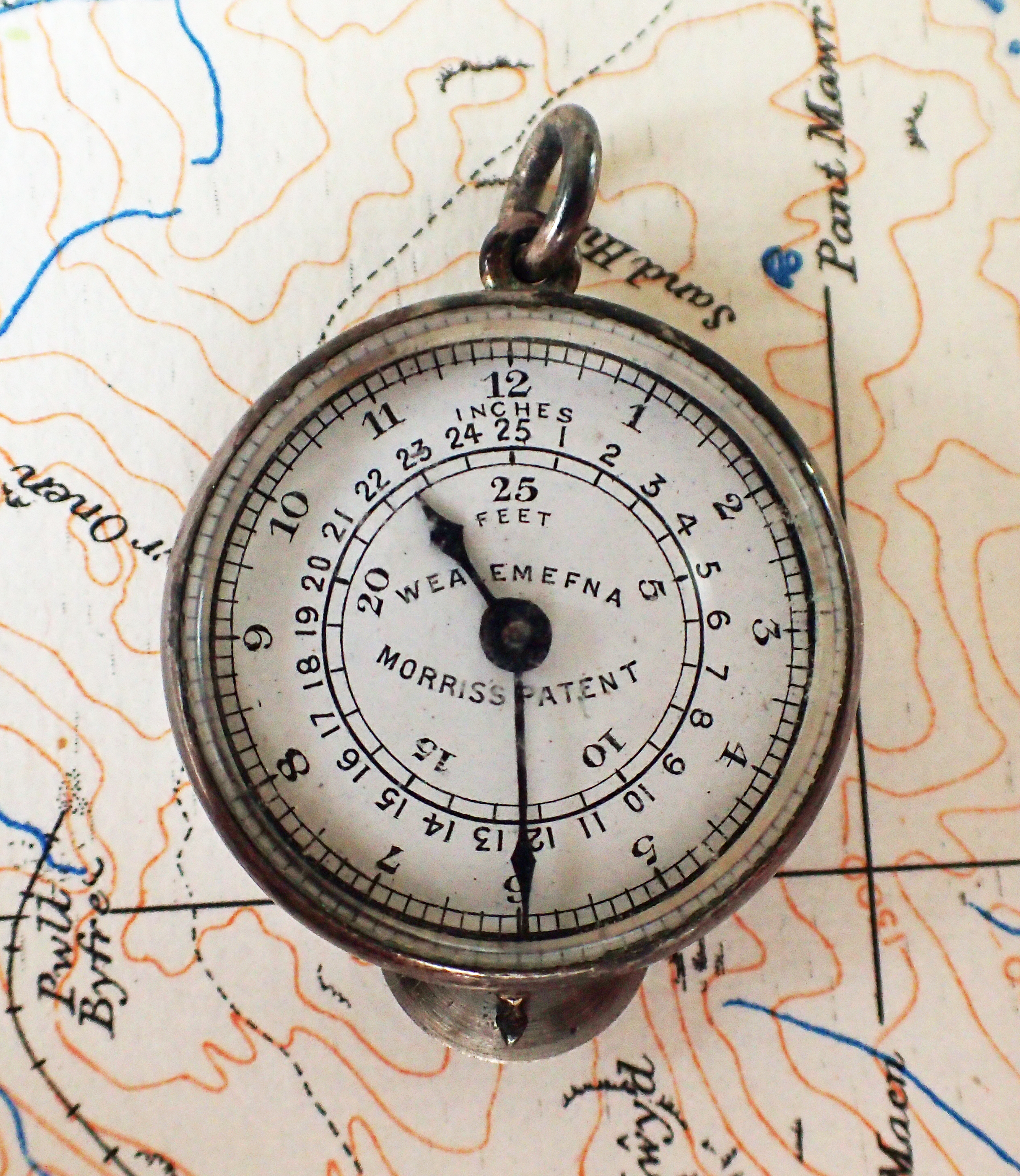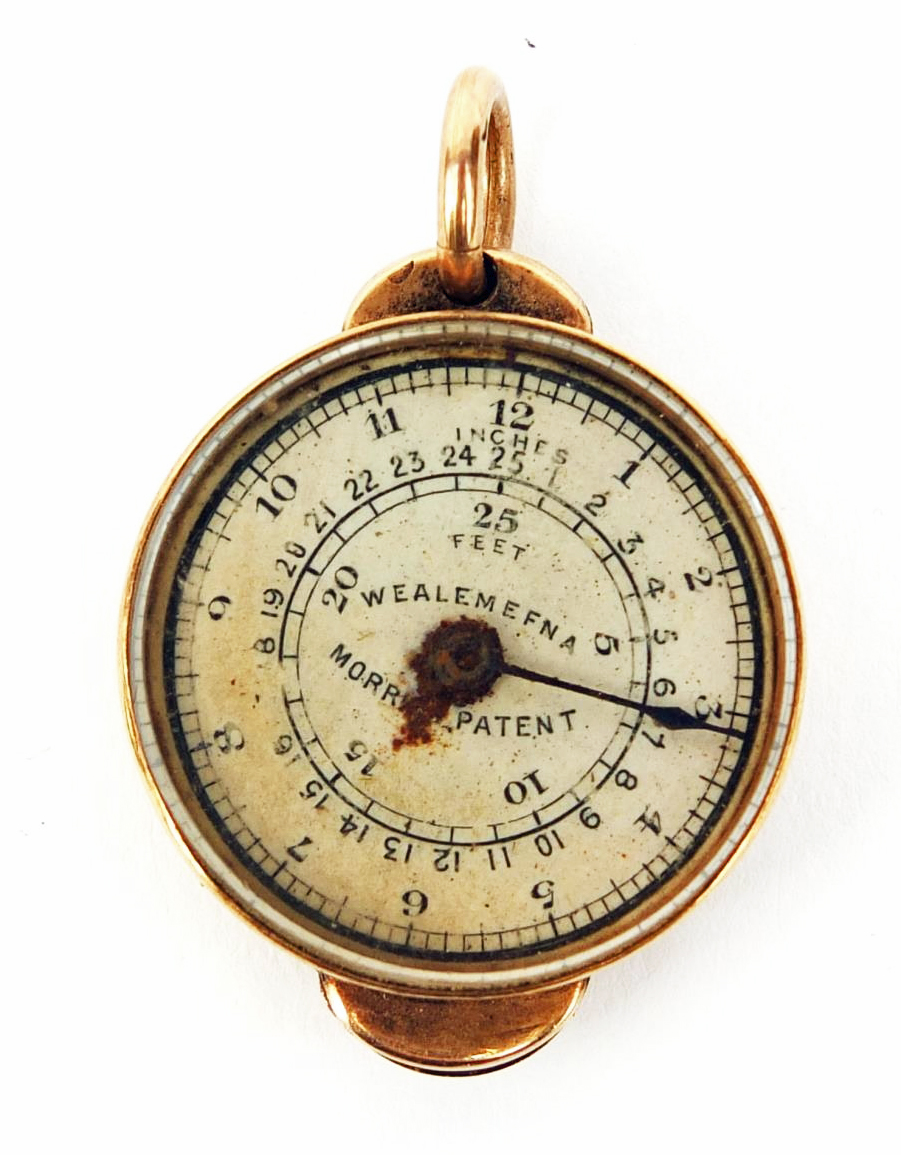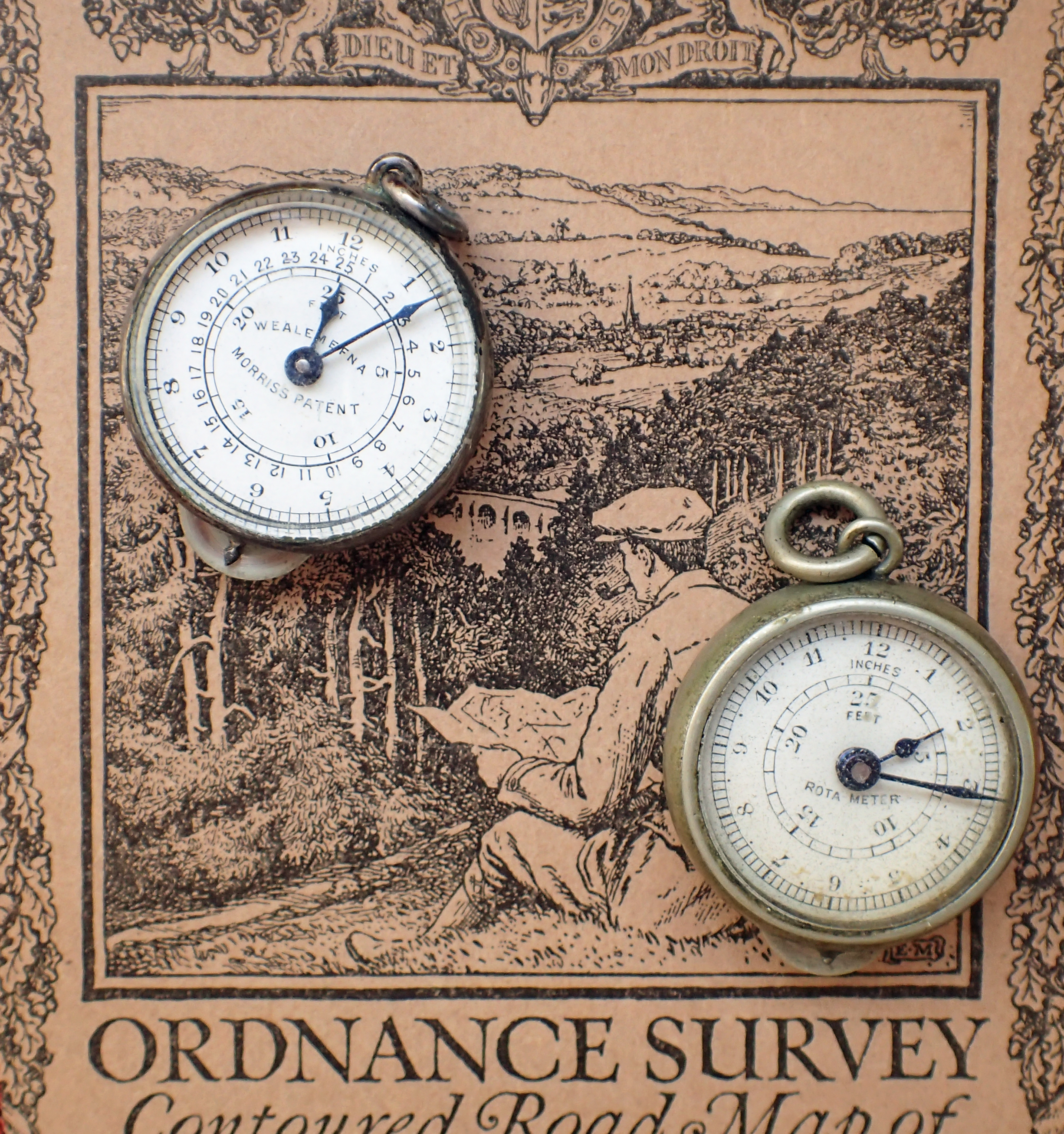
The Wealemefna is tiny in the hand. The case of this watch-chain instrument measures just 26mm across its width
Morris’s Patent Wealemefna is a simple map measurer dating from the 1870s. It was invented by Edward Russell Morris, of the Morris Patents Engineering Works, High Street, Birmingham. Quite tiny in size, it was designed to hang from the end of a gentlemen’s watch chain.
It was possible to purchase this instrument with a variety of case finishes- gilt, silver-plated, nickel, silver or gold. Cases were simple and lacked any additional decoration though subsequent resellers would occasionally add their own case inscription.
The measurer will measure lines on maps or anything else, by holding it in the hand, face toward you, then wheeling forward. Despite it’s ‘bijou’ dimensions, it will measure long lines. The first incarnation of the Wealemefna measured lines up to ten feet in length with a second generation in the 1880s extending this, with an appropriately altered paper face to the dial, to 25 feet. This is the example shown here.
Each complete rotation of the larger blued hand measures 12 inches and moves the smaller hand forward one digit of the inner circle on the paper dial. One inch of measurement is registered on the outer marked circle, showing eighth of an inch graduations. For an instrument some one hundred and forty years old, it still works faultlessly.
“Mr Edward Russell Morris, of Birmingham, is much happier in his inventions than devising names for them”
Illustrated London News, 1876
It has an odd name. The English Mechanic and World of Science: Vol. 33, London, 1881, informs us that Morris created a wholly original name in an attempt to outwit his imitators, also declining to disclose the actual origin of the word.

Morris’s Wealemefna- Shows eighth of an inch graduations and will measure lines up to 25 feet in length
“Mr. Morris has invited our inspection of several forms of his ingenious little mysteriously-named measurer, and though it is late in the day to call attention to it—and probably unnecessary—we may just say that it is a most handy and accurate companion. Its inventor has recently brought out a miniature form of the instrument, which registers up to 10ft., and maу be carried in the waistcoat pocket, or worn as a watchguard-pendant”
“English Mechanic and World of Science” Vol. 33, London, 1881,
in response to comments made in the same journal in 1879
Morris was a member of the Institute of Civil Engineers from 1880 and designed and manufactured map measurers in a range of sizes, this is the smallest. The Wealemefna weighs just 15g. Exactly the same as a similar dimensioned Rota-Meter measurer produced by Barker and Son just a few years later which Three Points of the Compass will be covering later in the year.
Three Points of the Compass has looked at a few more Map Measurers in detail. Links to these can be found here.





Greatt post
LikeLiked by 1 person